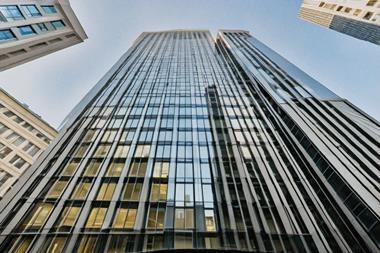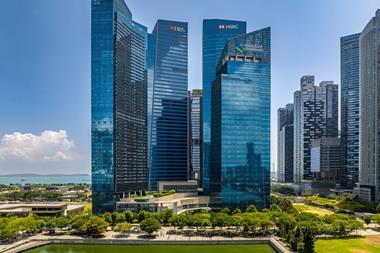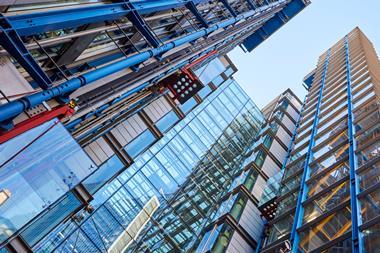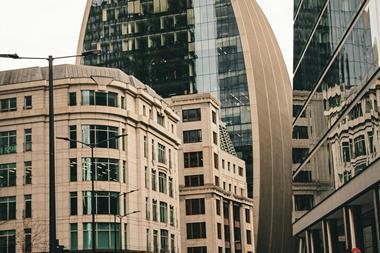The investment market continued its downward slide in April and posted the largest decline in volume since the onset of the credit crunch.
Sales of significant office buildings totalled just $4.9bn (€3.1bn) last month, an 80% decline from a year earlier. New offerings were flat versus a year ago, but $3.8bn more listings than closings came to market in April. So far this year, a total of $37bn of office properties have been put up for sale, twice the volume of transactions that have closed.
Optimists have to look closely to find any positive signals in the marketplace. For example, some larger properties have started to trade. At the end of March, two office properties sold for over $500m each and two $600+m sales closed in April. These two large deals propelled sales volume of CBD properties to $3.5bn last month, the highest monthly volume this year. However, sales of suburban properties fell to their lowest levels in April. After accounting for well over half of 2007's dollar volume, portfolio sales have become rare in 2008. Not a single office portfolio sale was completed last month, although several pairs of assets did trade.
An optimist could also see slight improvements in pricing. Several near-record prices for office buildings were achieved last month in DC, Manhattan and Houston, three markets that continue to attract buyers in this challenging environment. Nationally, cap rates fell 10 bps to just under 7.0% and average price per square foot increased for the first time this year. However, one month of improvement is not a trend and some of the variation in pricing may just reflect a change in the quality or composition of the assets that are trading.
Although most bids are coming in well shy of asking prices, the transactions that are successfully selling have yet to reflect a significant price correction. Prices for office properties nationally are off just 2% from their peak in Q2 2007 according to the Moody's/REAL Commercial Property Price Index. Prices are holding up better in the top 10 markets where prices are down less than 1.0%.
The gap in pricing between buyers and sellers is wide, perhaps 15% or more. Furthermore, declining sales volume indicates little progress is being made to close the gap. Sellers are largely sticking firm to their prices even though there are few buyers. In the meantime, capital continues to accumulate on the sidelines waiting for conditions to change.
Not all buyers are constrained by the debt markets or waiting on the sidelines for prices to fall. The most prolific US office buyers this year have been Hines (five deals), Legacy Partners (four deals) and the Grubb & Ellis funds (formerly Triple Net, 13 deals).
Very few other firms have closed three or more deals this year. However, a diversity of foreign buyers has emerged including new groups from Dubai, Dublin and repeat buyers from Spain, Germany, Israel and London. The list of active buyers also includes a concentration of institutional investors but it is missing many of the equity funds that dominated the market a year ago.
Like all other types of buyers, institutional investors have dramatically slowed office acquisitions this year. However, their share of all office acquisitions has increased slightly to 23% and the institutional sector remains net buyers of office.
Over the past year, their appetite for offices has shifted to favour CBD over suburban properties. In addition, more recent acquisitions have involved core strategies over value-added situations. New York City, San Francisco and Houston have been the preferred markets for institutional buyers.
Pension funds had planned to boost commercial property acquisitions this year, but the "denominator effect" has curbed some of their demand. However, there is still a large pool of equity capital committed and, since they generally invest using low leverage, institutions will be key players in the market recovery.
Equity funds dominated the investment landscape for office properties in 2007 with over $88bn in acquisitions at prices that were well above market averages. With the high leverage that enabled these deals no longer available, the equity funds have already become net sellers and will likely remain so through 2008. Equity funds are known for using high leverage, taking greater risks and having fee structures that favour short holding periods - all of which make them potentially vulnerable in the current market. A considerable amount of properties now for sale are owned by equity funds.
Despite the mounting pressure to sell, new funds continue to attract capital, especially those looking to capitalise on distressed situations. Others are finding opportunities in mezzanine loans and other debt investments.
Foreign buyers of US office properties have doubled their share of the acquisitions market over the past year, accounting for 12% of all recent office acquisitions. Middle Eastern investors have been particularly prominent recently and two sovereign wealth funds from that area are rumoured to be behind the recent deal involving the GM Building. Several new Irish buyers have emerged to join firms from the UK and Europe that are enticed by the weak dollar.
Market players are reporting increasing interest from a diversity of cross-border sources, but also acknowledge that many foreign investors remain circumspect about the US market. Nevertheless, foreign investors became net buyers of office properties again in Q1 2008 after being net sellers since mid-2006. A wave of disposals from Australia could suppress net investment this year.
Taken from Capital Trends Monthly, May 2008
Bob White is president of Real Capital Analytics












